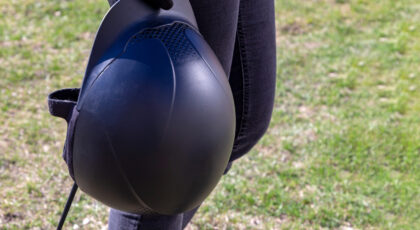I only rode once when I lived on the island of Nantucket, MA.
A stranger lent me a fiery Friesian Cross that snorted and puffed across the moorlands. I only rode once, because Nantucket, like the horse world, is exclusive, expensive, and has deemed bodies like mine unconsumable.
In both the equine world and on the island 30 miles off Cape Cod, women are expected to be small and forever young. On sea or on horseback, the phrase “you can never be too rich or too thin” may be too crass to say out loud, but the truth of it was everywhere.
As a size 16, I was not too fat to swim in the waves crashing on the beach in Madaket. I have not been too chubby for the 20% rule of the horses I ride, nor too big for the realities of farm work. Nevertheless, the whispers of my unworthiness lurked everywhere. It was in advertisements, window displays, and at events. In my jobs on island, it was in who they chose to put in the back of the house and who they chose to put in the front. In my horse life, it was who rode for the photoshoots and who held the horses in the background.
On the island of mansions and in the sport of kings, if we are not consumable, we are not enough. Are the images of us effortless enough on Instagram? Are our legs long and elegant enough for the equitation class? Do our cheekbones stick out enough to sit in front of the Galley restaurant? Are our bellies flat? Are the tiny clothes new? Our skin flawless?
If the answer is no, we will miss out on many opportunities. If the answer is yes, we may get our dreams, but we will pay a price.
Those of us who have been deemed unconsumable are told that we are welcome as long as we are determined to change. Do this workout, take this pill, try that diet. Suppose we don’t appear to be constantly “trying,” then we are best left unseen. There is a reason that bodies like mine can only find riding clothes online or in a sad tiny rack at the back of tack stores. Our existence, despite it being the national average, is an affront to the ideal.
While acceptance may be achievable for a while, it becomes clear that the higher we climb, the more unattainable the body standards become. In her memoir Long Live the Tribe of Fatherless Girls, author T Kira Madden finds solace from her turbulent home by spending most of her time competing and excelling at horse shows. Yet as she grows up, her body changes, and she leaves the sport because, as she writes, she has been deemed “too fat to be a jockey too fat for showjumping too fat for the Olympics too fat too curvy too woman too soft.” Stalking Madden’s Instagram, it is crazy-making to imagine that she would ever be “too fat” for anything. If bodies like hers are seen as unmanageable, then it simply demonstrates how absurd the standards are.
Yet, the price for those of us whose bodies are “acceptable” is also high. For those who “make it,” there is constant pressure to stay that way or get even smaller. A 2011 study of equestrian teams across seven universities found that that there was a prevalence of eating disorders among 42% of English riders and 48.9% of Western riders. The report noted that “Overall, participants perceived their body images as significantly larger than their actual physical sizes (self-reported BMI) and wanted to be significantly smaller in both normal clothing and competitive uniforms.”
Despite the time and money and talent lost to unrealistic body standards there is something even worse at play. A culture that prizes women’s bodies for their “consumability” makes us something to use and discard. It grooms us to tolerate constant policing of our bodies and in the process makes all women more vulnerable to exploitation. Many of us have been victims of sexual violence both in and out of the horse world. While this type of harm is complicated, when we are encouraged to be consumable, it gives those who would hurt us more impunity to do so.
Of course, the island of Nantucket and the horse industry are not the only places where the consumption of women’s bodies is a problem. It is a problem across many sports, industries, and communities. No matter where it is, I can’t help but wonder what would happen if women decided that their bodies were no longer for others’ consumption?
What if we were no longer accepted an idea that is unattainable for many and dangerous for all? Would we have more time, energy and money for the things we loved? Would our sports be more inclusive? Would those who inflict pain on us have less power?
I hope so, but the first thing to do is notice it and say it aloud: Our bodies are not for consumption.


 June 16, 2021
June 16, 2021 

























